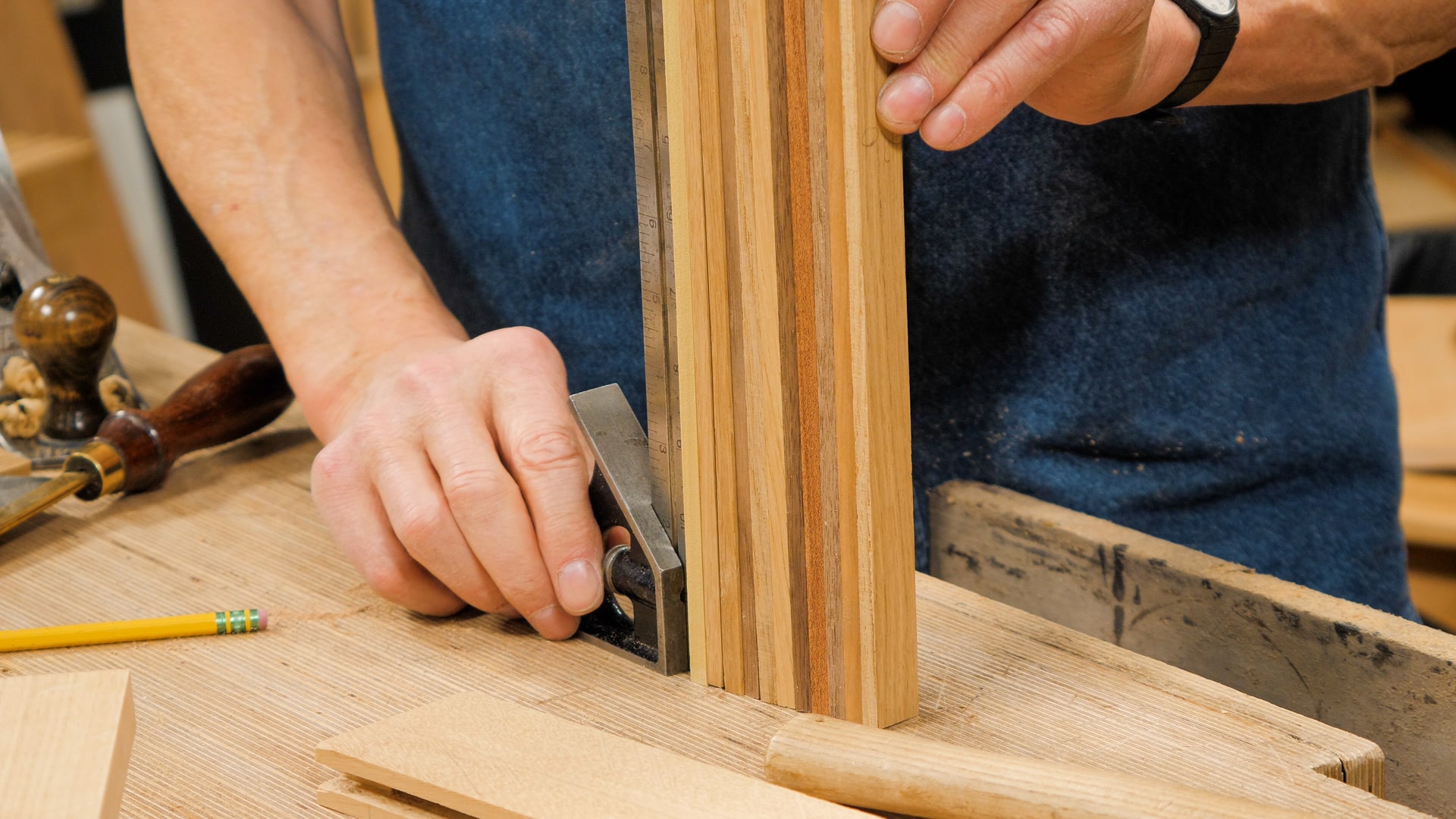Sellers Home Bedside Cabinet: Episode 3
Posted 22 March 2023
This is an episode in a paid series. Want to watch it? You just need to sign up as a paid member, and you can enjoy this video and many other videos we think you will love.
From the frame joinery, we create the unusual tambour styling in mixed woods, and fit and join the tambour edges ready for fitting and installation. We use hand methods and the bandsaw for ripping the pieces, and true up the final surfaces with hand planes. Along the thin edges, we make an even bevel to create a bevel-edged joint line between each piece, ready for the final glue-up. Gluing up is highly unusual as we glue up both the frame and the panel pieces at the same time. We think you will enjoy this episode.


he is great!
Here! Here!
Is that a ember mug in the background Paul . its the one downside to woodworking ,in that one gets so engaged in ones work that the coffee always goes cold 😢. hopefully ill get one for my birthday this year.
I’m in the USA and have been using titebond original glue. I think the glue would have set before I could get the pieces together if I tried that assembly. Do the pva glues have a longer open time in the uk? Thanks for another great episode
Hi Richard,
Much as in logic, it seems that an efficient way of finding something out in woodworking is to claim its opposite.
Therefore: PVA glues of UK do not take a longer time to cure than PVA glues anywhere else.
For whatever it is worth.
PVA glues set and cure by losing water into the surroundings and into the surfaces being glued up. Prof. R. Bruce Hoadley consequently in his book “Understanding Wood” recommends moistening the surfaces; while late Mr. D. Charlesworth advocates adding water to the glue (up to 20%). Either variant will extend the open time. Personally, I’ve nothing but positive experiences from adding water to Titebond PVA glues.
Compared to several other brands and types I’ve used, Titebond Extend offers longer open time, which is further extended by the addition of water; allowing for an extension of knocking together and apart, without having to revert clamps.
Being tardy, I use Titebond Liquid Hide Glue. With water added and kept at 60 °C in a baby bottle warmer, it stays open also for pretty comprehensive glue-ups. For big jobs, I will sometimes further soothe my nerves by warming the glue surfaces with a hair dryer.
Allegedly, Old Brown Glue (also a hide glue) offers really long open times of several hours. That glue also needs to be kept warm
Hi,
Sorry if my question is lame. Will it make it any easier if we glue the panels separately to make it resemble a board and then try to plane the ends and fit it into the grooves just like we do with a drawer bottom? In case that works then I feel it will address the issue with the glue setting too quickly as we would have separated the steps. But I am a very inexperienced enthusiast here so please feel free to let me know any obvious challenges and issues with that approach.
By the way, I am still not able to understand or visualize how and why paul is creating a chamfer/angle on all the slats while assembling. There is no close up or diagram for me to understand this. Appreciate any feedback on clarifying this.
Thanks,
Laxmi
Or just glue the frames first except for leaving one stile without glue. Allowing this to set and then we put in the slats and glue those. At the end we can glue the last stile to finish it off. I do understand this may be a trivial aspect for most experienced folks here but I am not too confident in my speed and I am sure it will take quite long for me to glue the slats and by this time the frame may have almost set
I don’t get several hours open time with OBG. That’s not to be disagreeable, but just to avoid disappointed expectations. I feel the same urgency with OBG and hide glue as I do with PVA although I do paint some warm water from the glue bath on at times to slow things down. I don’t thin the glue, though. Gluing is another skill and the more you do it, the more you find you can do. You figure out what order to do things in, how to move things along, how to not dilly dally getting the glue on, set out preset clamps, etc. As for drying time differences….If the PVA in the UK is in a garage in Wales at 150% relative humidity and 40F whilst the PVA in the US is in a garage in Arizona at 20% humidity and 100F, one might well expect a difference…. 🙂
Thanks for both of your answers. I’ve used OBG quite a bit and really like it. The clamp time can be quite long if I want to get on with a project. I’ve done some experiments where I’ll clamp some pieces of wood together. After overnight I can usually break apart an obg joint apart by hard hand pressure. Once it’s been around 48 hours it’s as strong as titebond 1 as far as I can tell.